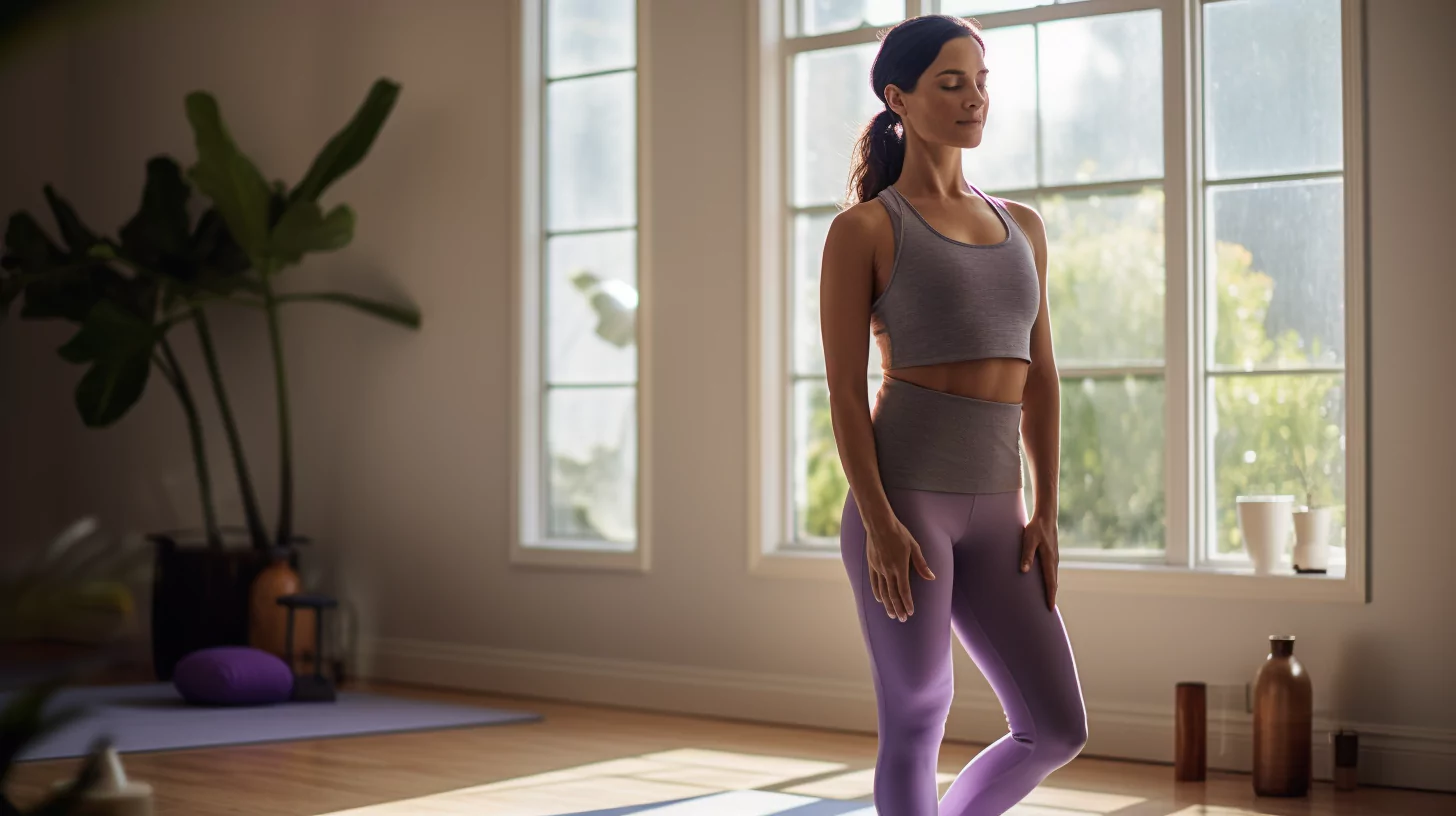The word “yoga” is Sanskrit and stands for union—it is a unification of the body, mind, and spirit. If you keep this in mind, starting your yoga routine will become more than just a morning workout.
Regardless of whether you are looking to try this life-changing practice for the first time or have been practicing it for a while, yoga is a place where you can constantly learn, grow, and evolve.
This powerful practice can transform your body and your life. Most importantly, when you start doing it on your own, you are no longer a follower but a true yoga practitioner.
Benefits of an effective morning yoga routine
Unlike coffee, getting into a daily yoga practice during the first part of the day gives you an energy boost without a mid-day caffeine crash. Here’s a closer look at a few morning yoga benefits:
1. Boosts digestive fire
Clean and healthy guts are the path to a healthier, happier life. Many yoga poses involve bends, twists, and turns that effectively wring out the digestive tract, soothe spasms, and stoke the digestive fire that heats the system and helps assimilate the food.
More research is being done into the powerful gut-brain connection, so encouraging gut motility is important. And a morning yoga routine can help do just that.
2. Increases circulation and boosts the immune system
When you move gently from stretch to stretch, you raise the heat in the body. Your circulation increases, and the blood flowing from your internal organs to your extremities picks up its pace.
A morning yoga routine will increase blood flow, charge the lymphatic system, and give the immune system a healthy kick of power.
3. Provides a powerful energy boost
Deep, diaphragmatic breathing that is encouraged in yoga practice helps replenish the oxygen stores in our cells, leading to an upsurge of energy available for us to tap into.
So, incorporating yoga into your morning yoga routine can help you banish that troublesome morning fatigue with ease.
3. Decreases stress and anxiety
It can help you establish the tone, pace, and perspective of your upcoming day. No matter what your schedule looks like, a little yoga can do your mind a great deal of good.
After a morning yoga practice, you may find your levels of stress and anxiety diminished in the wake of the energy you harbor.
A simple morning yoga routine for beginners
Morning yoga practice isn’t just for the pros. If you’re a beginner, there’s plenty you can do to get started. And the best yoga morning routine is the one you can do on a regular basis.
According to Cecilia Sardeo, a celebrated yoga teacher and head instructor of The Mindvalley Yoga Quest, getting started is the most important part of your journey. And as a beginner, you want to flow in the way your body feels rather than striving for perfection.
“Just explore where you are at without any judgment. This is how you will create space for your expansion,” she adds.
Here are some of the best poses for a yoga newcomer:
1. Cat-Cow
This pose is wonderful for gently massaging the spine and internal organs. It’s an absolute must to include in your morning yoga routine.
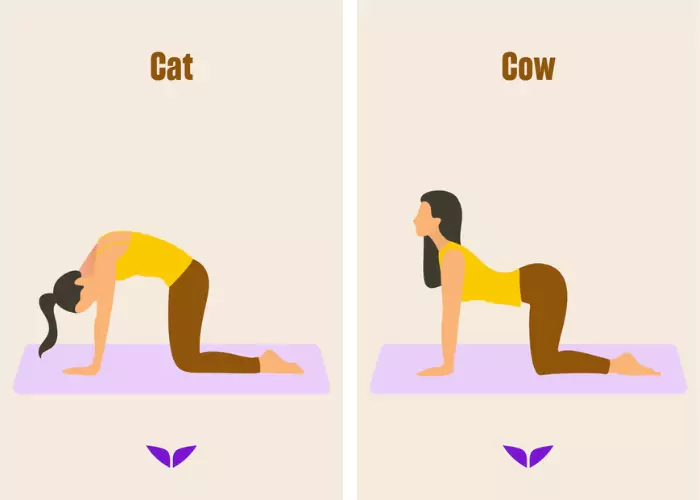
How to do it:
- Begin in a tabletop position, with your hands and knees centered over your shoulders and hips. Make sure your head and neck are in line with your spine, with your eyes looking at the floor between your hands.
- On an in-breath, lift your head and chest toward the ceiling, gaze upward, and let your belly sink toward the floor. This is the cow pose.
- On the out-breath, gently drop your head and round your spine toward the ceiling. This is the cat pose.
- Together, these poses, in combination, stretch the spine and create heat in the belly, energizing you from the inside out.
- Stay in the cat-cow pose for as long as it takes you to complete 10 breaths, synchronizing your inhalations and exhalations with the movement of the body.
2. Downward Dog
This one is safe for beginners and advanced practitioners alike. It’s perfect for your morning yoga stretches and circulation boost.
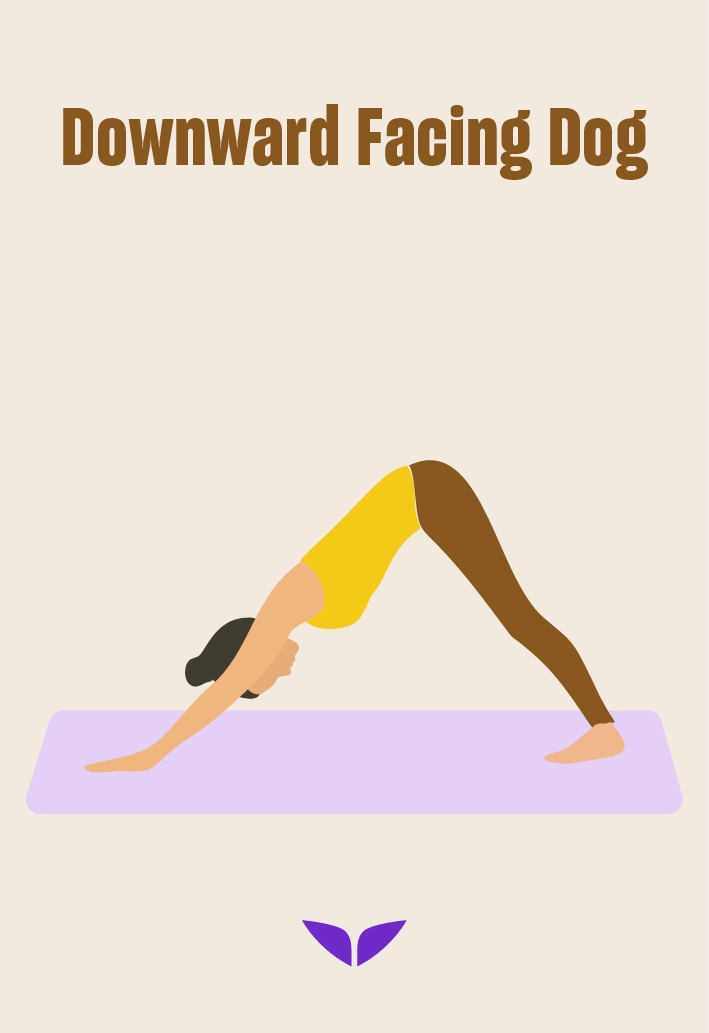
How to do it:
- Begin in a tabletop position, with your hands and knees centered over your shoulders and hips.
- Then, slide your hands forward an inch or so, and turn in your toes.
- Lift your knees from the floor and raise your hips into the air. Straighten your arms but don’t lock your elbows. Lengthen your tailbone and lift your sitting bones toward the ceiling.
- At first, you may not be able to rest your heels on the floor, or fully straighten your legs. That’s okay. In fact, when first moving into downward dog, it can be helpful to pedal the legs — that is, to straighten one leg at a time, moving your hips gently from side to side as you do so.
- Rest in a downward dog pose for three deep, mindful breaths.
3. Sphinx
A good pose to balance downward dog, the sphinx pose helps open the heart and increase flexibility in the spine. It’s also a great way to begin working toward the more advanced cobra pose, so make sure you include this in your morning yoga practice.
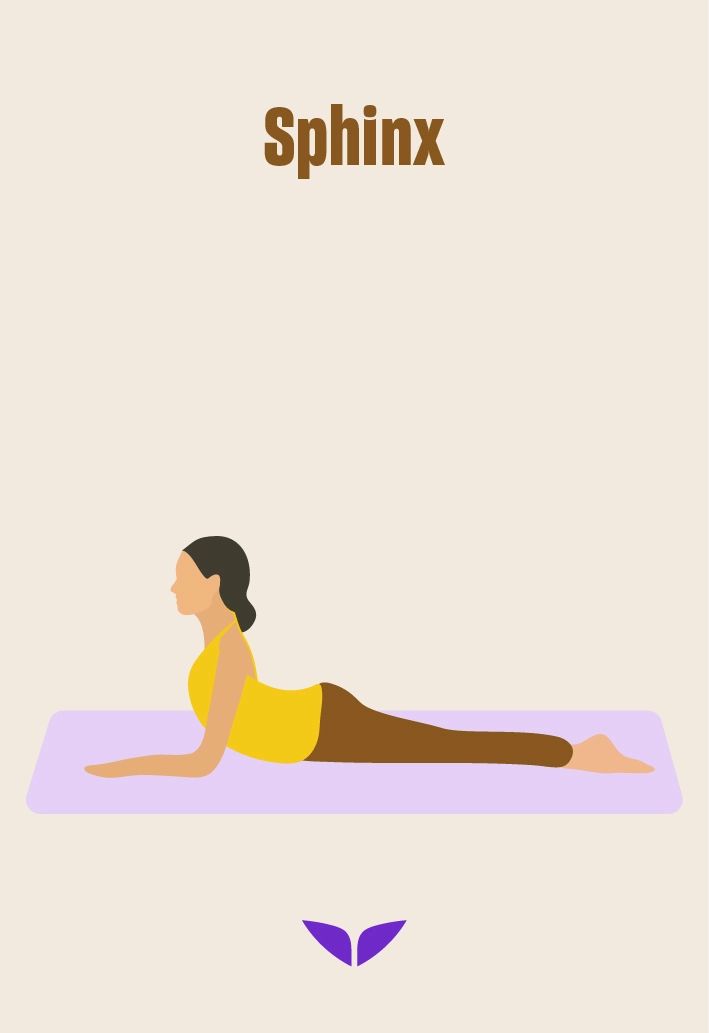
How to do it:
- Begin by lying prone on the floor with the tops of your feet flat on the mat and your forearms and palms parallel to one another under your shoulders.
- On an in-breath, slowly raise your head and chest up off the floor into an easy backend.
- Stay here for five breaths.
4. Mountain
This pose looks easy at first glance, but don’t be deceived. Mountain pose is a powerful way to activate the breath and increase cell oxygenation.
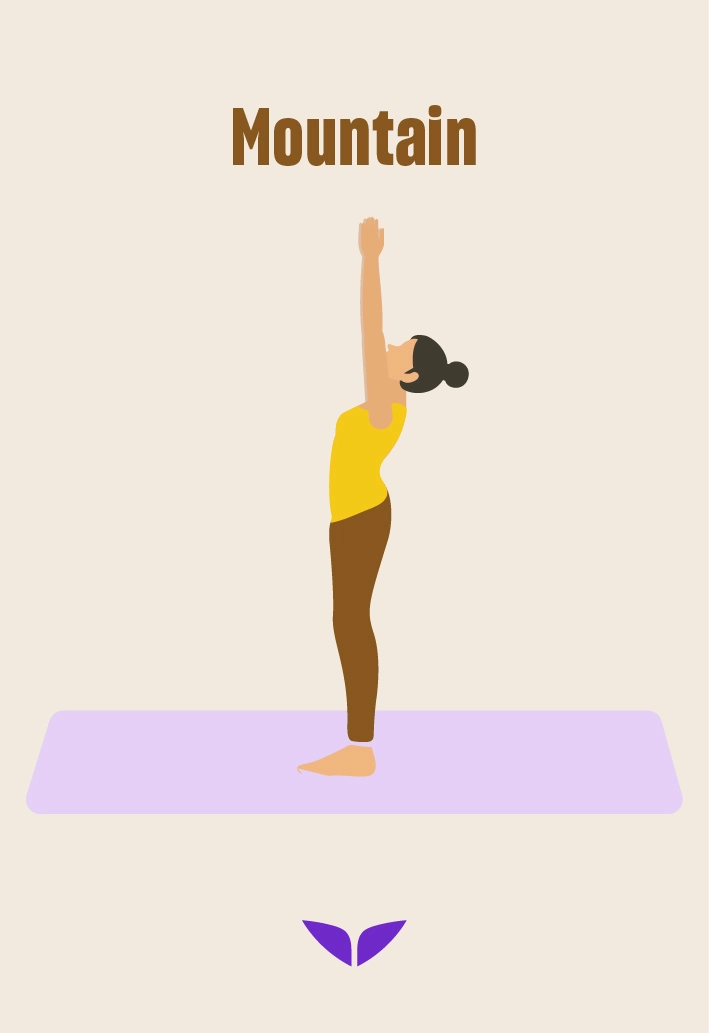
How to do it:
- Stand at the top of your mat with your feet together, your spine erect, and your hands at your sides. Take a moment to sway. Find your balance in the pose. Ground yourself down from the top of your head to the tips of your toes.
- Once you’ve found your position, settle into the pose. Drop the shoulder blades, center your hips, widen your chest, and let your arms drift to a natural resting place.
- To challenge yourself in this pose, try closing your eyes. Breathe deep from your diaphragm.
- Stay here for ten breaths.
5. Intense Forward Fold
The natural progression from the mountain pose is the standing forward bend. This pose both stretches the legs and soothes the mind.

How to do it:
- Begin by standing in a mountain pose. Next, place your hands on your hips. On an out-breath, hinge at the hips, and torso out, and sink your upper body toward the floor.
- Pedal the legs back and forth when you first come into this pose. Try to rest with straight legs.
- When you’re settled, let the weight of your arms and torso pull you closer to the floor.
A simple morning yoga routine for intermediate practitioners
If you’ve been practicing yoga for a while and developed some strength and flexibility, check out this intermediate yoga routine to invigorate your morning:
1. Warrior I
This pose strengthens your legs and opens your hips and chest. On top of that, it improves your balance and overall posture.
How to do it:
- Start with your toes together, with your arms along your body.
- Step with your left foot into a lunge, keeping your right leg straight and turning your right foot at a 45-degree angle.
- Extend your arms above your head, maintaining a strong balance.
- Squeeze your shoulder blades together and down, and lift your head to look up at your fingertips.
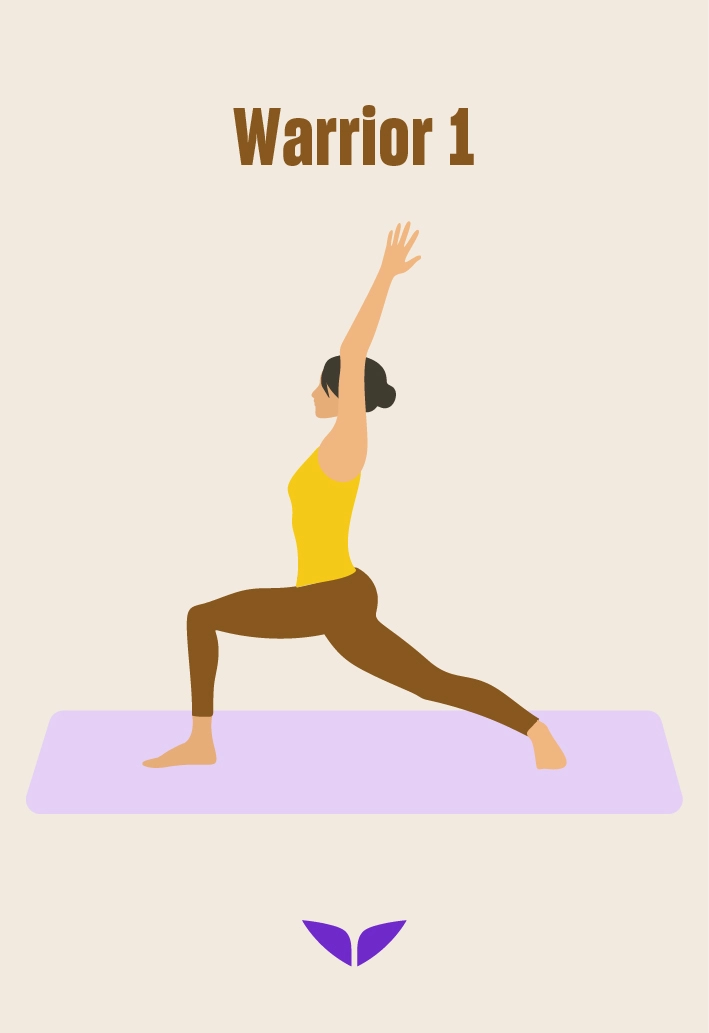
2. Bridge
Bridge focuses on strengthening the backside of your body and improving your posture. It works out your hamstrings, glutes, and quads.
How to do it:
- Lie on your back with your knees bent and feet flat on the ground.
- Place your arms at your sides with your palms on the ground.
- Inhale.
- As you exhale, push your hips up toward the sky, with your tailbone slightly tucked.
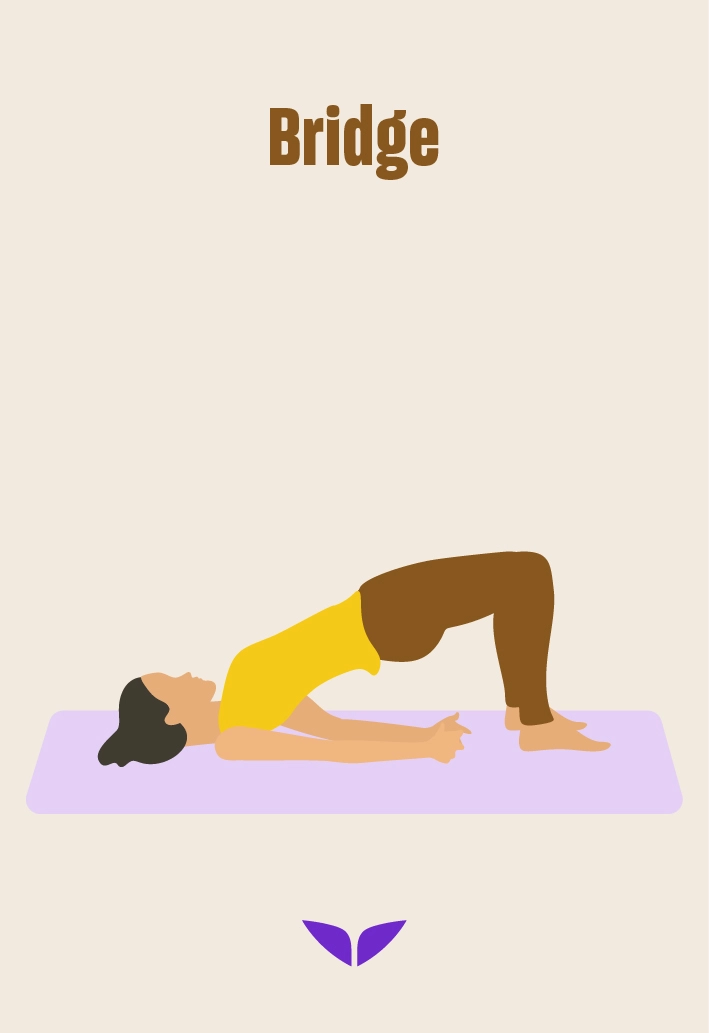
3. Cobra
This posture helps stretch the spine, chest, shoulders, and abdomen, improving your overall flexibility. Most importantly, it stimulates the energy flow in the body which leads to an increase in energy. So it’s a brilliant posture to do in the morning.
How to do it:
- Lie on your belly and stretch your legs straight back.
- Press the tops of your feet into your mat, keeping your toes together.
- Place your palms down close to your chest.
- Look up and press down into your forearms, lifting your chest up with your belly button on the floor.
- Hold this position for 20 seconds.
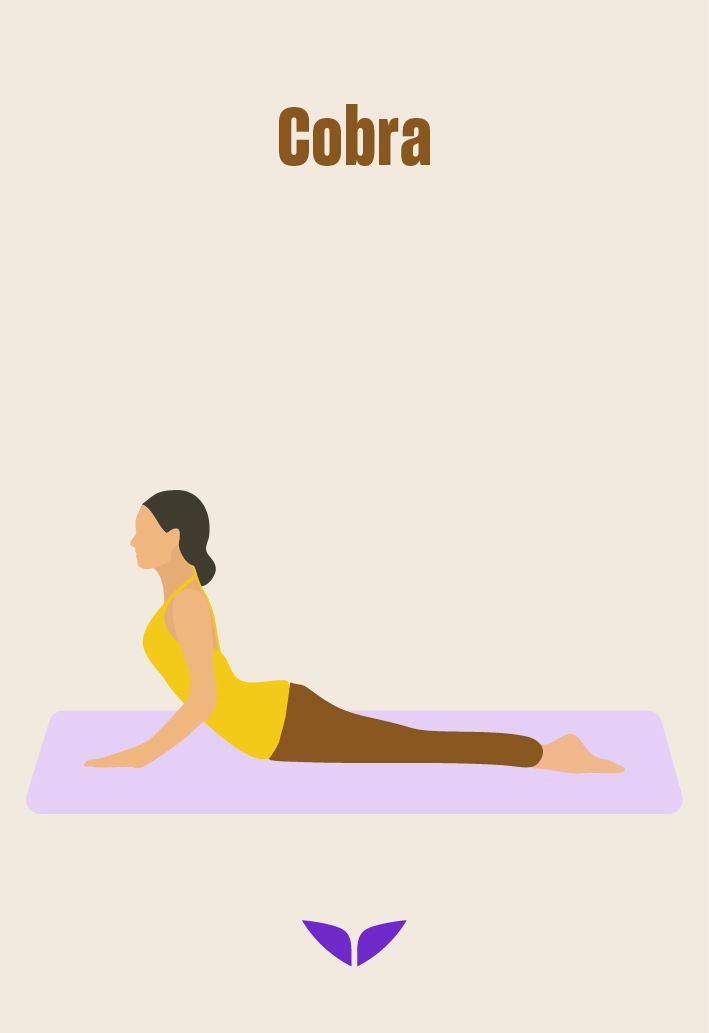
4. Bow
Bow improves your digestion and strengthens your back and abdominal muscles. In fact, the bow pose is one of the best postures you can do to eliminate stubborn belly fat.
How to do it:
- Lay on your stomach with your arms by your sides.
- Bend your knees and grab your ankles with your hands.
- Keep your knees in line with your hips.
- As you inhale, lift your heels away from your butt and your thighs off the ground, continuously kicking up.
- Press your shoulder blades back and look up and forward.
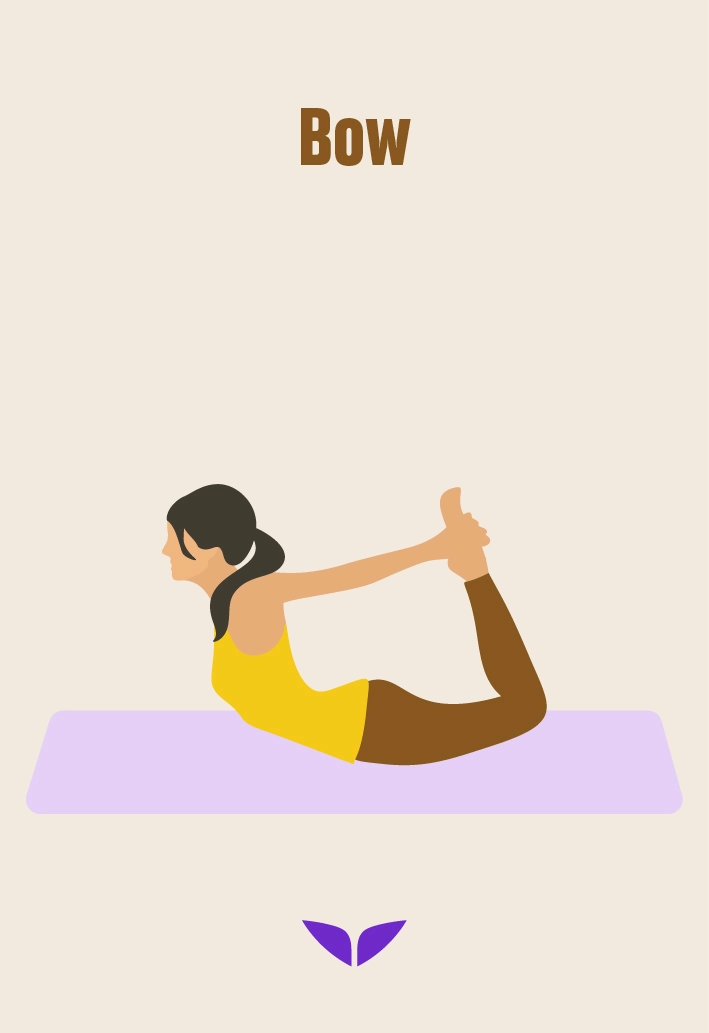
5. Camel
Camel pose bumps up your energy, relieves your lower back, and opens your heart. It might be a little scary to perform this back bend in the beginning. But the more you practice it, the more beneficial it gets.
How to do it:
- Sit down on your knees, with your legs hip-width apart.
- As you inhale, engage your core and drop your head back, looking behind you.
- On another inhalation, place your hands on your hips with your hands on your sacrum, drawing your elbows back.
- Lift your sternum, allowing your rib cage to expand.
- Extend your spine long and reach with your hands toward your heels, one heel at a time.
- Grab your heels with your entire palm, draping your fingers over the soles.
- Keep lifting through your sternum, pushing your chest forward.
- If you don’t have spinal flexibility, keep your hands on your hips with your thumbs on your sacrum.
- Gently extend your head backward, looking for your feet behind.
- With every exhalation, draw your hips forward gently.
- To exit, bring your chin to your chest and your hands to your hips with your thumbs on your sacrum. Use your hands to support your lower back as you slowly come back up to your knees.
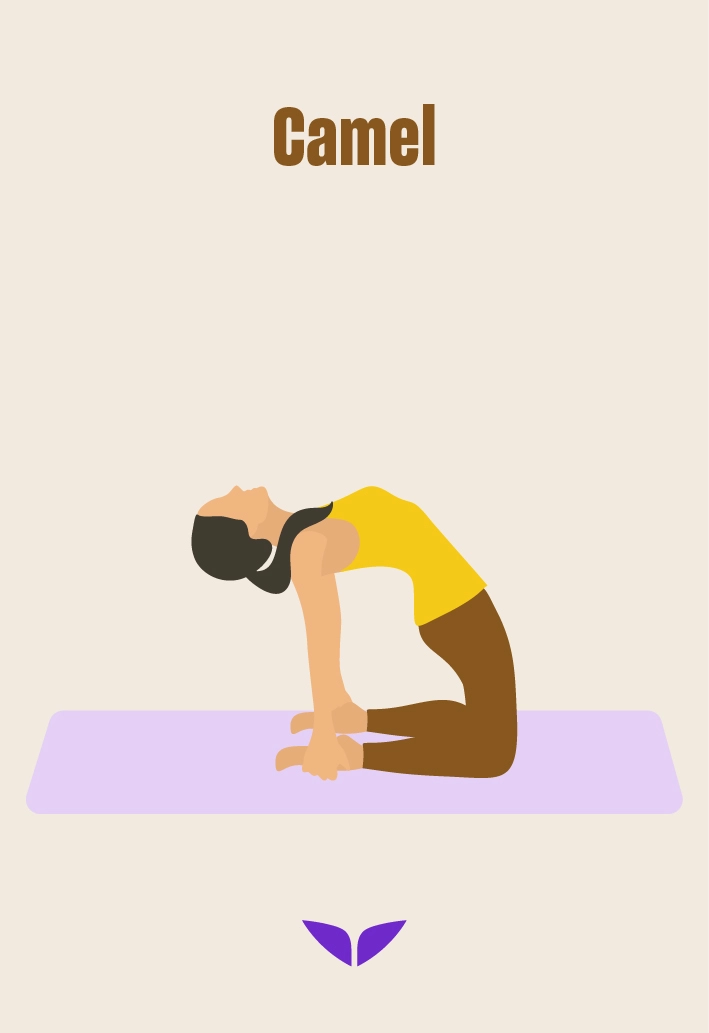
10-minute morning yoga practice
A morning yoga routine doesn’t need to take up too much of your time. The true beauty of morning yoga is that the benefits of the practice are available to you, even if all you have time for are a few breaths in the cat-cow pose.
Cecilia explains that one of the most important principles of yoga is called “Satya,” which stands for truthfulness. It’s about staying true to yourself and your practice.
She says, “We often break Satya when we overcommit. This is how we lose our energy and get tired very quickly because we say ‘yes’ to things we meant to say ‘no’ to.”
So when you commit to your morning practice, start small and increase it over time. And during the day, only say “yes” when you really mean it. This mindfulness practice will help you create more space for things that matter, including your yoga practice.
Working-in with Mindvalley
Many people falsely believe that yoga is another type of workout. But yoga is a work-in as it creates awareness and a mind-body-spirit connection, bringing harmony to every aspect of your life.
Most importantly, yoga allows you to discover your divinity, connected to all there is. And this is the spiritual essence of yoga.
If you aspire to create this conscious union with yourself and the Universe, join The Mindvalley Yoga Quest. Trained by nine world-class yoga instructors with their own unique perspectives, it’s designed to enrich your understanding of yoga.
In just 21 days, you may find that you’ve:
- Developed strength, balance, and flexibility,
- Strengthened your base,
- Overcame fears, and
- So much more.
You can unlock your free access and sample the trial lessons of this Quest.
Welcome in.
